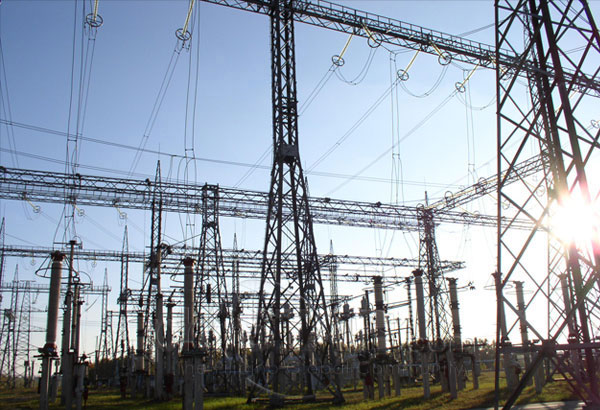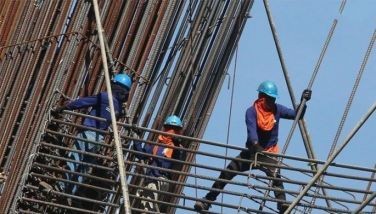A fishy story

The Malabon Fish Port is an iconic symbol of how our marine resources have spawned a livelihood program for thousands of families for decades, having been completed in 1976. It is the main port in Luzon, built from a reclaimed area that is now slowly sinking. The sad plight of the area always finds ample space in the front pages of dailies, long after the floods have receded in many areas in Luzon, so it is good news indeed for Malabon residents (for the whole of Luzon actually) that the fish port will finally face rehabilitation and upgrade. Its sorry state runs contrary to all good manufacturing practices, acceptable sanitary standards, and just about anything that a good fish port in the international community needs to if it is to become an international- standard compliant fish port.
The Philippine Fisheries Development Authority (PFDA) is seeking a loan of $61.8 million, hoping to tap the Chinese Export-Import Bank, but this is only good enough for the first phase of the rehabilitation project which includes the breakwater, unloading areas, market, improvement of road networks, cold storage facilities and sewage treatment plant to ensure that the water flowing from Manila Bay will be free from pollution and toxin. But with this funding, we will be able to comply with the international standard covering the Analysis Critical Control Point where everything will be checked from the time the fish was caught, unloaded, preserved, and unloaded again for distribution.
The Department of Agriculture (DA) has endorsed the plan to National Economic Development Authority (NEDA), so within the next two weeks they should hear from this agency. Actually, the NEDA Board already approved this plan as early as 2007, but it has since prescribed. All the prices therein have substantially changed over the years.
JICA, the Japanese Investment Coordinating Agency which is in charge of Japan’s investments abroad gave us a grant and conducted an exhaustive study on the rehabilitation of the Malabon Fish Port. It was the Japanese government that funded two projects of the PFDA in Iloilo City, Zamboanga City, Camaligan in Camarines Sur, Lucena in Quezon and Soal in Pangasinan. The second project included the Davao fish port which was completed in 1995. Gen San’s port was completed in 1998 and continues to be in good condition. The Iloilo and Zamboanga ports having been completed in the early 80s were found to be defective and non-compliant with international standards, so they badly need rehabilitation.
JICA completed their study and submitted them to the PFDA last March only. However, because of the twin disasters that hit Japan this year (deadly earthquakes and tsunami), JICA had to beg off from extending aid for our ports –they need the funds to rebuild their badly damaged ports at home before extending assistance to other countries. However, they graciously allowed the Philippine government to use the study which was funded by the Japanese government as basis to tap other financial institutions for the loans for this rehab project.
The DA reportedly referred the study to the Asian Development Bank (ADB) and the good news is, as relayed by PFDA general manager Rodolfo T. Paz Jr., ADB is interested to finance the rehabilitation of five regional ports and the construction of a new port in the Eastern Seaboard. As Mr. Paz says, “we badly need a regional port complex to have a home port for our deep-sea fishing vessels to operate in the Pacific region in the Eastern Seaboard where biodiversity abounds. Most likely, it will be in Surigao del Sur.”
Mr. Paz adds that “it is also necessary that we open up one in Luzon. The Secretary chose Real, Quezon in the Eastern Seaboard.” The current port in Infanta, Quezon is fairly new, having been finished in 2001. Apparently, there is a need to have a home port in Quezon so that our fishing vessels will not have to pass through Batanes. Having a home port here will lessen the travel time immensely. Imagine having freshly-caught fish in Manila in two hours’ time? That’s about the estimate of Mr. Paz.
Our fishing vessels have not tried catching fish in the Eastern Seaboard because our current equipment is only suited for fishing operations in the China Sea (Western Seaboard) where the currents are not as strong. Mr. Paz narrated that the last time our brave Filipino fishermen attempted to do so in their inadequate fishing boats, “nahilo sila”, and they had to abort the expedition. Apparently, our local fishing vessels have to be redesigned to be able to tackle the conditions in the Eastern Seaboard where the current is twice as strong.
The PFDA and the DA would like to see the day when the Eastern Seaboard can be opened up for our local fishing vessels so that the Filipinos can really enjoy the bio-diversity that abounds in the area.
Meanwhile, the Malabon Fish Port rehabilitation and upgrade bears watching. Apart from waiting with bated breath on our funding application, there is the huge problem of informal settlers that have mushroomed around the immediate vicinity of the fish port itself. How has this scenario developed so extensively over the years? Why did the port authorities allow this community to grow undeterred, compounding the security problem, compromising the sanitary conditions of the fish port and aggravating the land conditions leading to the gradual but steady sinking of Malabon?
As the PFDA correctly pointed out, this scenario of having a housing area and a trading area consolidated in one place is a horror story that has not been replicated in any other country but the Philippines. The system that has been in place in Malabon, as PFDA claims, is that only legitimate and accredited buyers and processors are allowed entry into the fish ports. These legitimate people are issued temporary IDs by the port authorities, but having informal settlers swarming over the area makes it extremely difficult for them to enforce their accreditation system.
Add to this the problem of sanitation. Can you begin to imagine the current garbage disposal situation in the area? Can we hope to export from the Malabon Fish Port with existing conditions such as these? By all means, let’s address the informal settlers’ problems post haste before upgrading our facilities and totally rehabilitating the Malabon Fish Port.
Mabuhay!!! Be proud to be a Filipino.
For comments: (e-mail) [email protected]
- Latest
- Trending




























